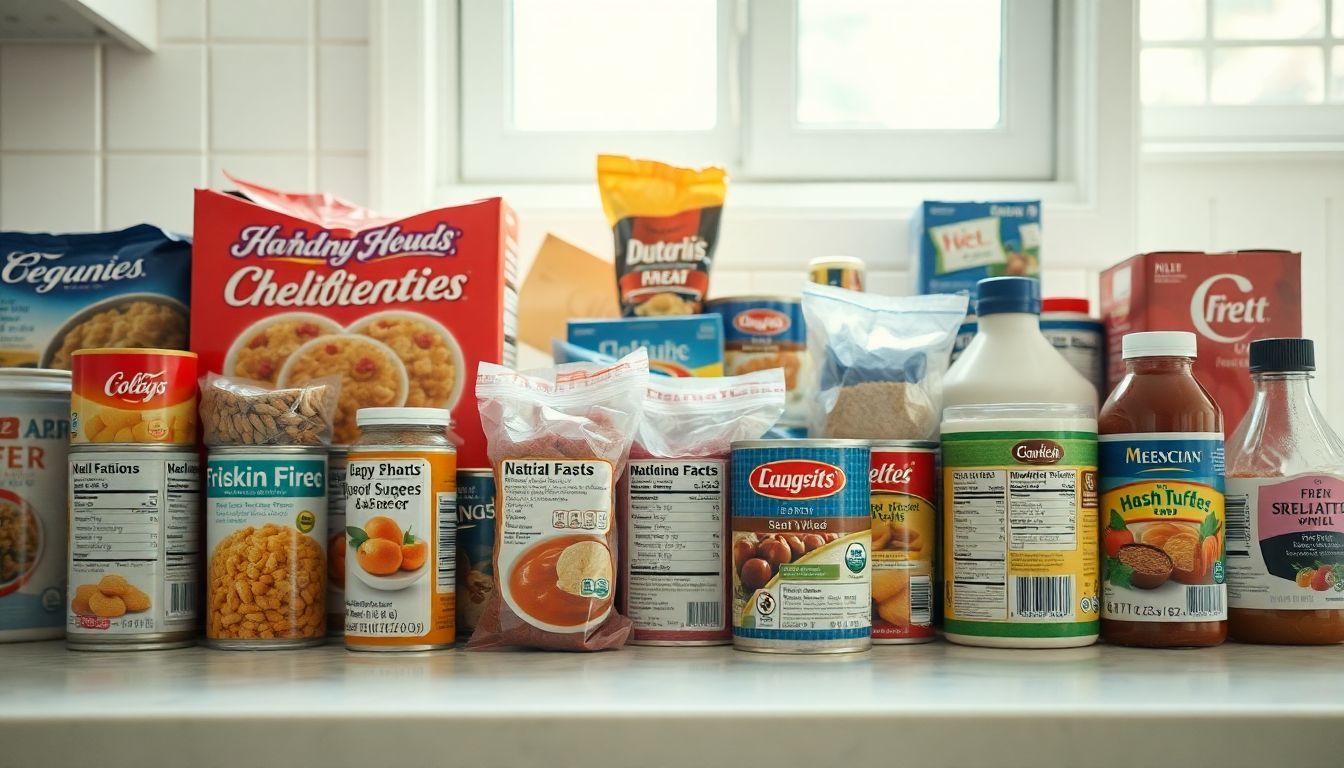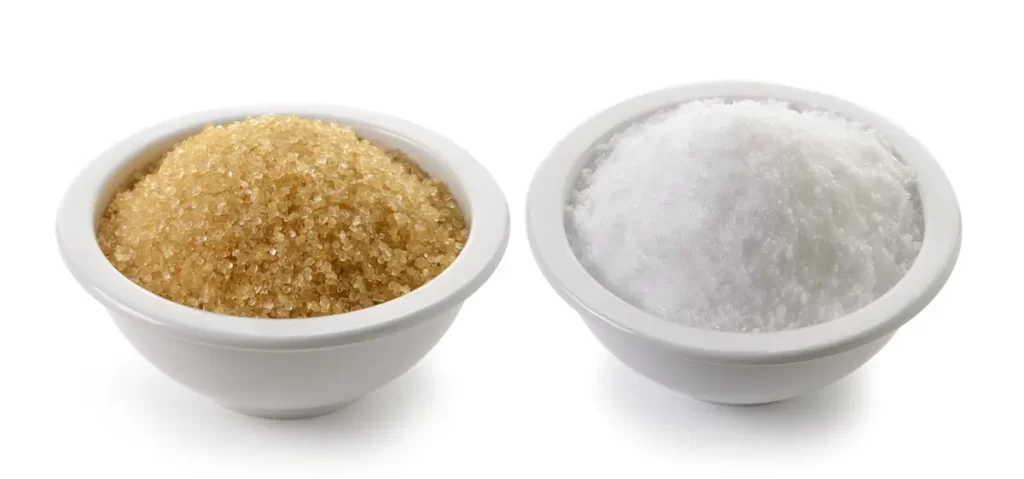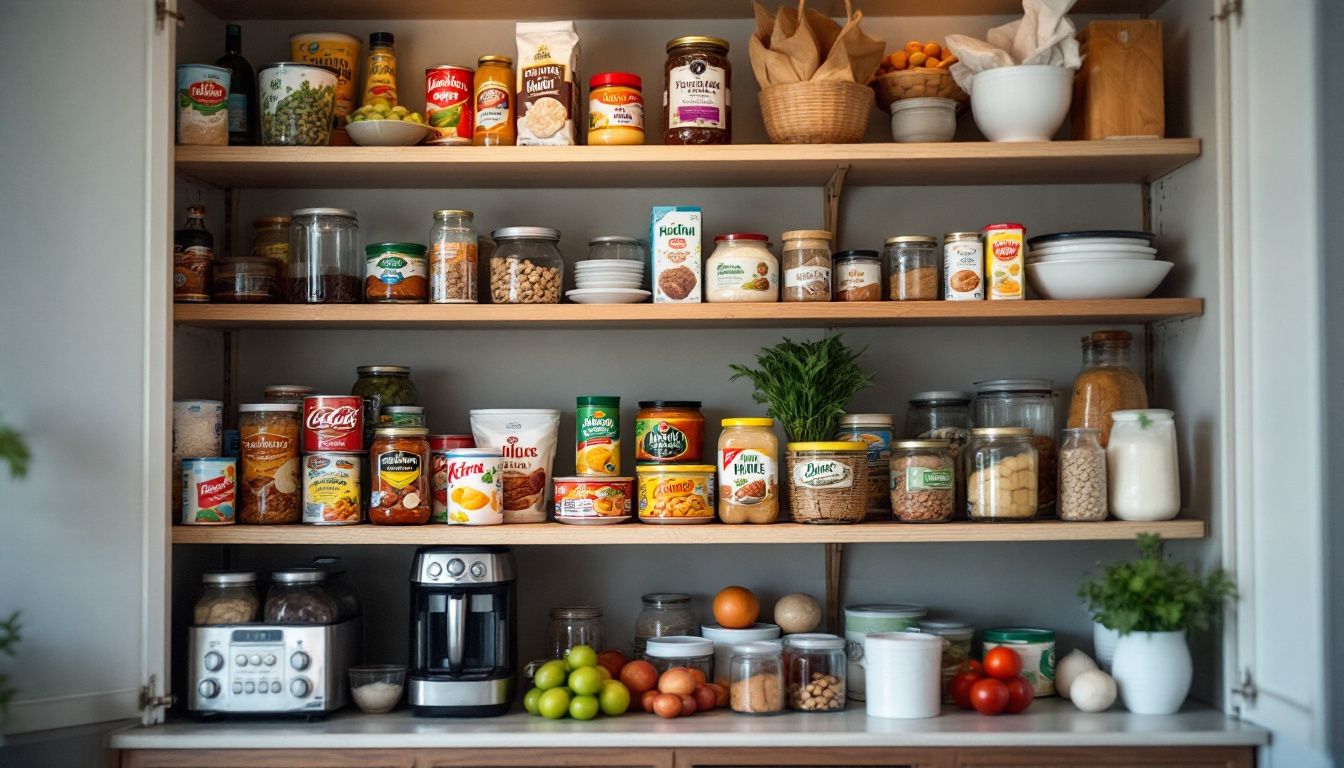Cutting back on sugar and salt can feel tough, but it’s worth it for your health. Most Americans eat too much of both, leading to issues like heart disease and high blood pressure.
Thank you for reading this post, don't forget to subscribe!This guide will show you easy ways to spot hidden sugars and salts while offering tips to lower them in your meals. Small changes today can lead to big health payoffs tomorrow—keep reading!
Key Takeaways
- Check food labels to spot hidden sugars and salts like maltose, corn syrup, or sodium nitrate. About 80% of added sugars and salts come from processed foods.
- Swap sugary drinks for water with lemon or unsweetened tea. Replace salty seasonings with herbs like basil or spices like cumin for flavor.
- Natural substitutes like stevia, monk fruit extract, or allulose can lower sugar intake without losing sweetness in meals.
- Cooking at home helps control ingredients. Use fresh veggies, lean proteins, herbs, and low-sodium options instead of ultraprocessed foods high in salt and sugar.
- Track your eating using a diary or app to spot patterns. Set small goals—like cutting sugary drinks—to gradually reduce added sugars below 10% of daily calories as advised by U.S guidelines.
Identifying Hidden Sugars and Salts in Your Diet
Many foods contain hidden sugars and salts that can surprise you. Checking food labels can help spot these sneaky ingredients in your meals.
Read labels to spot hidden sugars and salts
Check food labels carefully. Hidden sugars show up as cane sugar, corn syrup, or names ending in “-ose” like maltose and dextrose. Ingredients such as molasses and high fructose corn syrup also add sugar without you noticing.
Salt hides too. Watch for terms like sodium nitrate or monosodium glutamate (MSG). Packaged foods, sauces, and snacks often sneak these in. About 80% of added sugars and salts come from processed foods—so reading labels matters!
Understand common sources in everyday meals
Reading food labels helps, but it’s also key to know where sugars and salts hide. Sugary drinks like sodas, fruit juice, and sports drinks add a lot of sugar to diets without filling you up.
Breakfast cereals can pack more than 12 teaspoons (50 grams) of sugar in one serving—granola being the sweetest culprit.
Sauces are another sneaky source. Ketchup is nearly one-third sugar, with 1 teaspoon per tablespoon. Processed foods like low-fat yogurt often replace fat with added sugars; compare plain full-fat yogurt (8g sugar) to flavored low-fat options (24g per 6 ounces).
Table salt hides in ready meals, fast food, processed meats like bacon or sausage—and even condiments like mustard and mayonnaise.
Understanding what you eat clears the path for healthier choices.
Practical Strategies to Reduce Sugar and Salt Intake
Cutting back on sugar and salt can improve your health in many ways. Small changes, like choosing fresh fruit over sugary snacks or using herbs for flavor, make a big difference.
Opt for natural sweeteners and salt substitutes
Natural swaps for sugar and salt can make your meals healthier. They keep the taste while cutting harmful effects like tooth decay or high blood pressure.
- Use stevia as a sweetener. It’s natural, calorie-free, and works great in coffee or tea.
- Pick monk fruit extract for baking or drinks. It’s a zero-calorie option with no added sugars.
- Add allulose to desserts—it tastes like table sugar but has fewer calories and affects blood sugar less.
- Sprinkle cinnamon or vanilla extract on oatmeal for sweetness without sugary drinks or syrups.
- Replace candy bars with dark chocolate that has no added sugar—70% cocoa or more is best!
- Swap sugary drinks for fresh fruit-infused water to enjoy natural flavors without free sugars causing weight gain.
- Try unsweetened applesauce instead of syrups when making pancakes or waffles at home.
Switching salt is also easy with flavorful choices:
8. Opt for fresh herbs like basil, cilantro, or parsley—they boost flavor naturally in foods like whole grains.
9. Use spices such as paprika or cumin instead of salt in soups, meats, and veggies.
10. Add garlic powder, onion powder, or lemon juice to recipes; they enrich taste without high salt consumption harming heart health.
11. Season meals with low-sodium soy sauce if you’re cooking sweet-and-sour dishes.
12. Experiment with dried fruit to sweeten savory salads instead of salty dressings.
These changes can reduce added sugar and salt gradually while keeping your meals enjoyable!
Increase intake of whole, unprocessed foods
Fresh foods like fruits, vegetables, and whole grains can lower sugar and salt intake. Ultra-processed foods make up nearly 90% of added sugars in the American diet. Choosing unprocessed options helps cut down on these extra sugars.
Swap sugary drinks for water with lemon or unsweetened teas.
Processed foods often pack hidden sodium. Eating fresh produce reduces this problem while adding vitamins and fiber to your meals. The DASH diet highlights eating more whole grains, lean proteins, and veggies—great alternatives to frozen dinners or canned soups full of salt.
Prepare meals at home…

Adjusting Your Cooking and Eating Habits
Cooking at home helps you control what goes into your meals. Try new flavors by swapping salt and sugar with fresh herbs or natural extracts.
Prepare meals at home to control ingredients
Making meals at home gives you full control over ingredients. Store-bought or restaurant foods often contain hidden sugars, salts, and unhealthy fats like trans fats. Preparing food yourself can reduce reliance on ultraprocessed foods, which increase the risk of heart disease and cancer.
Batch cooking can save time during busy weeks while helping you eat healthier. Try making soups, stews, or casseroles with fresh vegetables and lean proteins. Use natural seasonings like garlic or herbs instead of table sugar or too much salt for flavor.
Simple changes lead to better health—experimenting with spices is next!
Experiment with herbs and spices for flavor
Swap sugar and salt with bold flavors like garlic, ginger, or paprika. Herbs like basil, rosemary, and cilantro can bring fresh taste to dishes. Spices such as cumin, turmeric, and cinnamon add depth without extra sodium or added sugars.
A study showed foods using herbs and spices instead of salt reduced sodium by up to 11.5%. Sweet recipes saw added sugars cut by 2.7% with alternatives like vanilla extract or cinnamon.
Most people preferred these healthier options—a win for both flavor and health!
The Role of Eggs in a Balanced Diet
Eggs are packed with nutrients that support healthy eating. Each yolk has about 200 mg of cholesterol, but moderate consumption is safe for most people. For healthy individuals, eating up to one egg daily does not raise heart disease risk.
Those with diabetes or heart issues should limit egg yolks to three per week. Pasteurized eggs are safer for recipes like homemade dressings or desserts using raw ingredients. Eggs provide protein and vitamins to help maintain balance in your diet while keeping meals satisfying and nutritious.

Monitoring and Maintaining a Low Sugar and Salt Diet
Track what you eat to spot patterns in sugar and salt use. Set small goals to make steady progress over time.
Track your daily intake using apps or a food diary
Using apps or a food diary can help track what you eat and drink. Studies show people who log their meals lose weight two times faster than those who don’t. Writing down your intake increases self-awareness, making it easier to spot unhealthy patterns like too much added sugar from sugary drinks or sweets.
Apps make tracking simple. Many let you monitor calories, sodium levels, and sugar intake based on dietary guidelines for Americans. For example, use an app to compare the sugar content in fruit juices versus fresh fruit or measure how much salt is in processed foods.
This builds better habits over time without feeling overwhelming.
Set realistic, gradual reduction goals
Start by reducing added sugars to under 10% of daily calories, as suggested in the Dietary Guidelines for Americans. Then aim for the World Health Organization‘s stricter goal—less than 5%.
Cut back slowly for lasting changes. For example, replace sugar-sweetened beverages like cranberry juice cocktail or soda with water or unsweetened tea.
Tackle one change every two weeks. Try swapping table sugar in recipes with vanilla extract or unsweetened applesauce. Use plain yogurt instead of sweetened versions in breakfast foods or snacks.
Gradual shifts help avoid cravings and make adjustments stick long-term. Support from family can also boost success!
Conclusion
Cutting back on sugar and salt can feel tough, but small steps make a big difference. Choose whole foods, check food labels, and cook at home more often. Use natural flavors like herbs or spices to keep meals tasty.
Stick with gradual changes—they lead to lasting health improvements. A healthier diet starts one choice at a time!
For more insights on how incorporating eggs into your diet can balance nutrition and taste, check out our detailed guide here.
References
- https://www.cdc.gov/diabetes/healthy-eating/spotting-hidden-sugars-in-everyday-foods.html (2024-06-17)
- https://www.hopkinsmedicine.org/health/wellness-and-prevention/finding-the-hidden-sugar-in-the-foods-you-eat
- https://www.consumerreports.org/health/nutrition-healthy-eating/ways-to-reduce-sugar-and-salt-in-your-diet-a4620347763/
- https://www.health.harvard.edu/nutrition/how-to-cut-back-on-sugar-and-salt (2016-11-14)
- https://www.nhlbi.nih.gov/news/2023/halt-salt-5-ways-cut-down-sodium-and-improve-your-heart-health (2023-02-13)
- https://pmc.ncbi.nlm.nih.gov/articles/PMC7232892/
- https://www.sciencedirect.com/science/article/pii/S2212267223012935
- https://pmc.ncbi.nlm.nih.gov/articles/PMC6950109/
- https://nutritionsource.hsph.harvard.edu/food-features/eggs/
- https://www.heart.org/en/healthy-living/healthy-eating/eat-smart/nutrition-basics/food-diary-how-to-keep-track-of-what-you-eat
